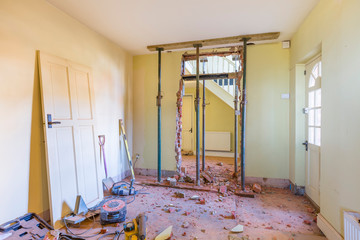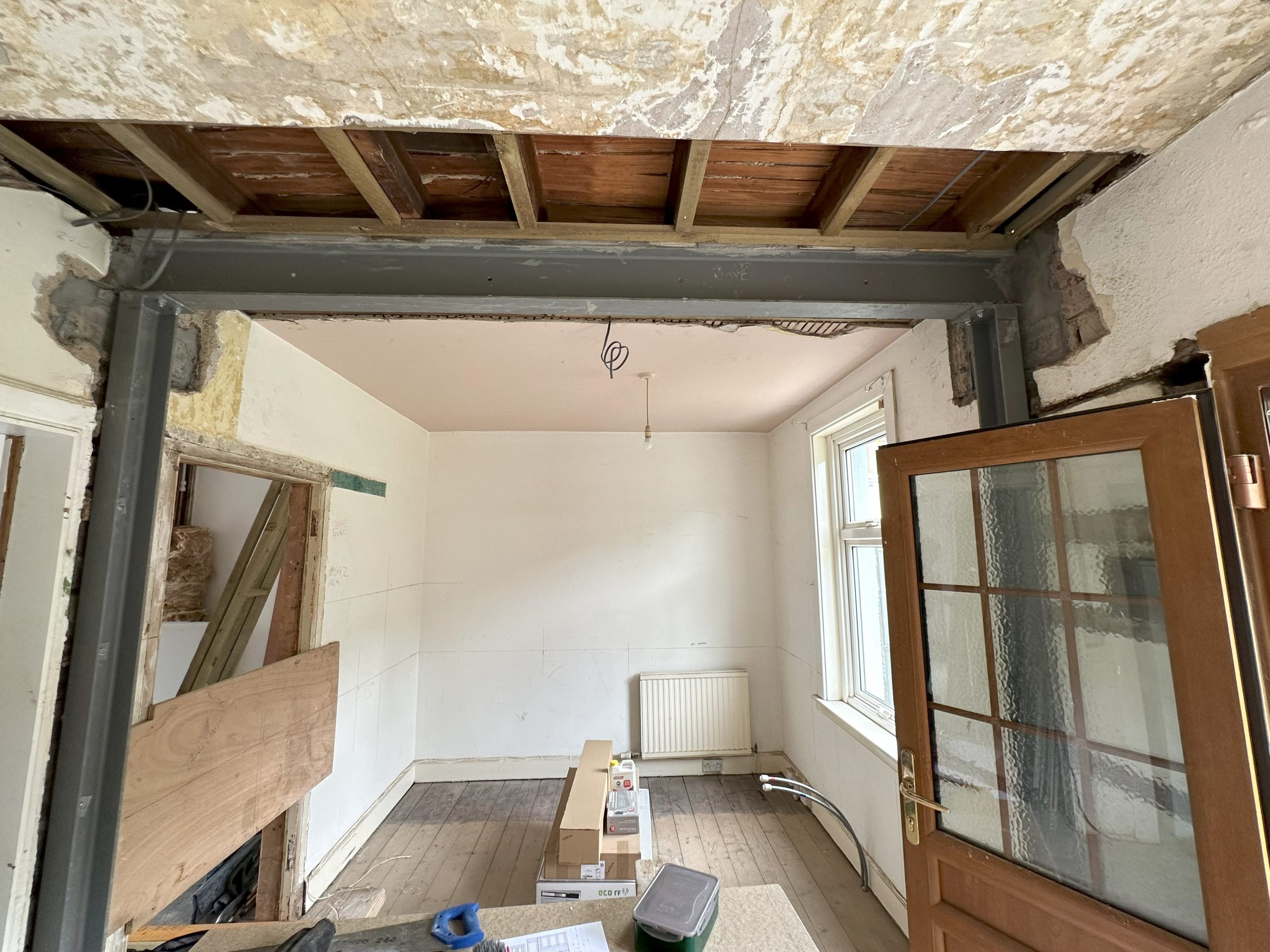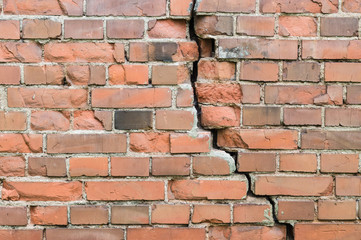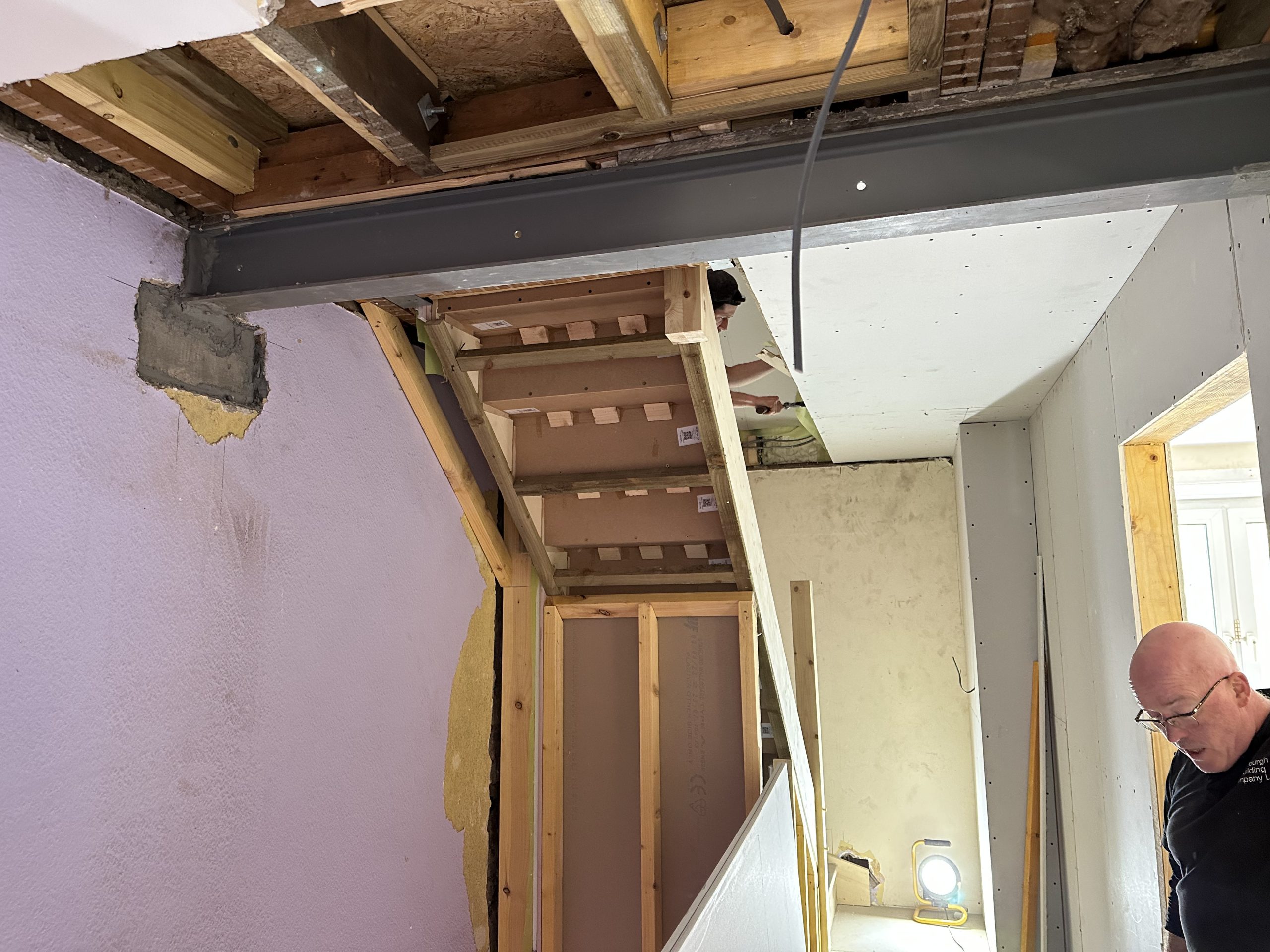Will my House Collapse if a Load-Bearing Wall is Removed? Find Out Here.
Home renovation is a popular way to refresh a home’s appearance and improve functionality. However, before undertaking any home renovation, it is important to understand the structural implications of any changes made to the property. One of the most crucial considerations is whether a wall being removed is a load-bearing wall or not.
Removing a load-bearing wall can cause structural failure in your house and can potentially lead to structural instability if not done correctly. Before removing internal walls consult a structural engineer. They can tell whether the wall is load-bearing or non-load bearing, and devise a plan for its removal while ensuring the structural integrity of your house. Failure to address load-bearing walls properly could result in serious damage or collapse, so it’s crucial to seek expert advice before proceeding with any modifications.
A load-bearing wall is an essential component of a house’s structural stability. Its primary role is to support the weight of the structure above it and distribute this weight evenly throughout the walls, roof, and foundation. Therefore, removing a load-bearing wall without proper precautions can potentially result in the collapse of the house.
If you are considering removing a wall in your house, it is essential to determine whether it is a load-bearing wall or not. This article aims to provide you with a comprehensive guide to understanding load-bearing walls, identifying them in your home, and taking necessary precautions to mitigate the potential risks associated with their removal.
Key Takeaways
- A load-bearing wall is essential to a house’s structural stability.
- Knocking down a wall without proper precautions can lead to house collapse.
- It is crucial to identify and understand load-bearing walls before undertaking any home renovation project.
- Understanding Load-Bearing Walls and Their Role in House Stability
Load-bearing walls are integral to the structural support and stability of a house. These walls are responsible for carrying the weight of the roof, upper floors, and anything else that rests on them. They are designed to transfer this weight down to the foundation and distribute it throughout the house.
Load-bearing walls are typically made of masonry but can also be constructed in timber, while non-load-bearing walls are often less chunky and constructed of thinner timber than load bearing walls.
Non-load bearing walls can be removed or relocated more easily, as they do not provide any structural support.
It is crucial to identify load-bearing walls in a home before undertaking any renovations that involve their removal or alteration. Failing to do so can result in serious damage to the house and compromise its structural integrity. Remember that you need to apply for building regulations approval.
Schedule a conversation with me
Load-Bearing Wall Distribution
Load-bearing walls are strategically placed to distribute weight throughout the structure of the house. They are designed to prevent any single point in the house from bearing too much weight, which could lead to collapse or damage to the foundation.
While load-bearing walls can be located in various areas of the house, the most common locations are near the center of the house, at the exterior walls, or perpendicular to the joists. Identifying these walls is crucial when planning any home renovations that involve structural changes.
Load-Bearing Wall Removal
Removing a load-bearing wall without taking proper precautions can be dangerous and compromise the structural integrity of the house. It is essential to involve a structural engineer to assess the wall’s importance and provide guidance on how best to remove it safely.
The removal process involves installing temporary supports to carry the weight of the house while the load-bearing wall is removed. The temporary supports are typically adjustable posts or beams and provide stability during the renovation process.

Load-Bearing Wall Replacement
If a load-bearing wall needs to be removed for renovation purposes, it will be necessary to replace it with an alternative structural support, such as a column or it may need a reinforced steel beam. The structural engineer can provide guidance on suitable replacements to maintain the house’s stability and structural integrity.
It is crucial to remember that any structural changes to a house require adherence to building regulations, gaining the necessary permission, and undergoing appropriate inspections.
Identifying Load-Bearing Walls in Your Home
Load-bearing walls are crucial to the stability and overall structure of a house. It is important to identify these walls before making any renovations that involve their removal or alteration. Here are some key signs to look out for:
Walls running perpendicular to the floor joists are more likely to be load-bearing.
Walls located centrally in the house, particularly those that extend from the foundation to the roofline, are more likely to be load-bearing.
Walls that are thicker are more likely to be load-bearing.
Walls that are supporting heavy objects such as ceiling beams or large appliances are likely to be load-bearing.
While these signs may indicate the presence of a load-bearing wall, it is always advisable to involve a structural engineer for a professional assessment. They can determine whether a wall is load-bearing and provide guidance on how to proceed with the renovation safely and effectively.
Schedule a conversation with me
The Consequences of Removing a Load-Bearing Wall Without Proper Precautions
Removing a load-bearing wall without proper precautions can have serious consequences for the structural integrity and stability of a house. Load-bearing walls provide crucial support to a building and distribute weight throughout its structure. Removing a load-bearing wall can cause the weight to shift and put excessive pressure on other load-bearing walls or structural elements, potentially leading to the entire building collapsing.
One of the main risks associated with removing a load-bearing wall is the possibility of creating an uneven distribution of weight. This can cause the floors above the removed wall to sag or even collapse. In addition, the stress placed on other load-bearing walls or structural elements can result in cracks appearing in the walls or ceiling.
It is important to note that not all walls are load-bearing, and it can be difficult for a homeowner to determine which walls provide structural support. Attempting to remove a load-bearing wall without expert advice is extremely risky and can have disastrous consequences. It is essential to involve a structural engineer to assess the structural support needed for any changes to a building’s construction. A structural engineer can provide guidance on necessary precautions and suggest alternative solutions to achieve the desired outcome safely and efficiently.
Other precautions to take include obtaining permits and complying with building regulations. It is necessary to acquire any permits required by local authorities and ensure that any building work complies with building regulations. Failure to do so can result in legal and safety issues.
In conclusion, removing a load-bearing wall without proper precautions can result in severe consequences for the structural integrity and stability of a house. It is crucial to involve a structural engineer and comply with building regulations to ensure a safe and successful renovation project.

Precautions to Take Before Removing a Load-Bearing Wall
The photo above shows the new structural arrangements once the load-bearing wall has been removed – this was a project that involved internal alterations on the ground floor and first floor as well as a loft conversion
Removing a load-bearing wall is a serious undertaking that requires careful planning and professional guidance. Here are some precautions to take before starting your renovation project:
Identify the load-bearing wall: Before removing interior walls, it is essential to determine if it is load-bearing or not. Signs of a load-bearing wall include vertical beams, joists, and studs that run from the foundation to the roof. If you are unsure, consult a structural engineer.
Assess the structural support: Removing a load-bearing wall can compromise the stability of the house. A structural engineer can assess the required structural support needed before removing the wall and suggest alternative solutions if necessary.
Obtain the necessary building permits: Check with your local authority to ensure you have the necessary permits and inspections required for the renovation project. Failure to comply with building regulations can result in fines or legal issues.
Plan for temporary support: During the renovation, temporary support must be in place to prevent the remaining structure from collapsing. Consult with a professional contractor to ensure the temporary support is correctly installed.
Remember, removing a load-bearing wall can compromise the stability of your home. Always seek professional guidance to ensure a safe and successful renovation project.
Alternative Solutions for Open Floor Plans
If you’re looking to remove a load bearing wall and achieve an open-plan look in your home there are alternative solutions that can allow you to achieve an open and spacious feel while maintaining the structural integrity of your house.
1. Install Support Beams: A support beam can be installed with the help of a structural engineer to take the weight-bearing load off the wall. This solution can create an open floor plan without sacrificing the stability of your home.
2. Utilize Columns: Columns can be used to replace load-bearing walls, creating a visually appealing aesthetic. They can also provide additional support for adjacent walls.
3. Use Non-Load-Bearing Walls: If you have non-load-bearing walls in your home, they can be removed to create an open floor plan. However, it is important to consult with a structural engineer to determine which walls are non-load-bearing and safe to remove.
When considering alternative solutions for open floor plans, it is important to consult with a professional for guidance. A structural engineer can assess your home’s specific needs and provide recommendations for the best way to achieve your desired results while maintaining the structural integrity of your home.
Schedule a conversation with me
Consulting a Structural Engineer for a Safe House Renovation
When considering a house renovation that involves removing a load-bearing wall, it is imperative to seek the guidance of a structural engineer. These experts are trained to assess the structural support needed for any changes to the building’s construction.
During the consultation process, the structural engineer will calculate the load and evaluate if the wall is structural and then determine the appropriate measures needed to ensure the house’s stability and safety.
Working with a structural engineer is crucial to avoid potential risks associated with removing load-bearing walls.
The Role of Building Regulations in Load-Bearing Wall Removal
Removing a load-bearing wall can have a significant impact on a house’s structural integrity and stability. As a result, building regulations play a crucial role in ensuring that the process is carried out safely and legally.
A project like this always requires a Building warrant, this is something that we can help you with.
We will submit the building warrant application along with drawings and specifications to allow the warrant to be approved.
Failure to do so can result in legal penalties and compromise the safety of the house.
Once a building warrant has been obtained and work is underway have been obtained, the building inspector will arrange to inspect the structural works before it’s covered over with plasterboard to verify that the removal process complies with building standards.
At the completion of the project, a final inspection will be carried out to confirm that the renovation adheres to the designated regulations. Homeowners should keep records of all inspections, permits, and approvals to ensure that they are in compliance with building regulations.
Signs of a Load-Bearing Wall Issue After Removal
Removing a load-bearing wall without proper precautions can put the structural support and stability of a house at risk.
Sagging floors: If you notice that the floors in your home are starting to sag or become uneven, it could be a sign that the load-bearing wall was supporting the weight of the upper level of your house. This can lead to further structural issues if not addressed promptly.
Cracks in the walls or ceiling: Cracks in the walls or ceiling are a common sign that there is an issue with the structural support of your home. This can occur if the load-bearing wall provided support to the roof or upper levels of the house.
If you notice any of these signs, it is important to take action immediately. Ignoring these signs can lead to further structural damage or even collapse.
Professional Assistance in Load-Bearing Wall Removal
Removing a load-bearing wall is a complex process that requires professional assistance to ensure the safety and stability of the house. It is advisable to involve experts in structural engineering and construction before undertaking this renovation.
A structural engineer assesses the structural support needed for any changes to the building’s construction and provides guidance on how to execute the removal of the load-bearing wall safely and efficiently. S
Removing a structural wall without proper precautions can lead to potential risks and consequences, including house collapse and compromised structural integrity. Therefore, professional assistance is critical to ensure the process is executed safely, legally, and without compromising the stability of the house.
If you want to remove a load bearing wall in your house there is a tried and tested process that you will need to follow
Please note that this is specifically for Scotland but the process is almost identical in England and Wales
Here’s our comprehensive process for projects involving structural modifications:
- Initial Customer Enquiry: We begin with your initial inquiry, gathering essential details about your project’s scope and requirements.
- Detailed Project Discussion: In a follow-up call, we delve into the project’s specifics, considering existing information like floor plans, and assessing its feasibility.
- Fee Quote and Permissions: We provide a comprehensive fee quote covering design work, obtaining building warrants, and planning permissions if necessary.
- On-Site Survey: Once the quote is accepted, we arrange a site visit for a thorough survey to better understand the project’s physical context.
- Initial Design Draft: Crafting the initial design, we fine-tune it until it aligns with your vision, ensuring your satisfaction. Concurrently, we request a fee quote from a structural engineer.
- Structural Engineering: Upon approval of the structural engineer’s fee quote, they assess your property, design structural modifications, and provide certification for the new layout.
- Application and Approval: With completed architectural and structural plans, we submit a building warrant application and shepherd it through the approval process. Once the work has been examined by the building inspector a completion certificate will be issued.
- Engaging a Contractor: Once the building warrant is secured, you have the freedom to engage a building contractor to execute the work.
This meticulous process ensures a seamless transition from conception to realization, with a focus on design integrity, regulatory compliance, and successful project execution
Schedule a conversation with me
Conclusion
Removing a load-bearing wall is a significant step in house renovation. It can, however, be dangerous if not implemented with proper precautions. Therefore, it is advisable to involve a structural engineer in the process to ensure the structural stability and integrity of the house.
Understanding load-bearing walls and their role in house stability is crucial before attempting any renovation. Identifying load-bearing walls in your house and taking the necessary precautions before removing them prevent any potential risks. Building regulations play an essential role in ensuring legal and safe renovation.
FAQ
Q: Can removing a load-bearing wall cause a house to collapse?
A: Yes, removing a load-bearing wall without proper precautions can potentially cause a house to collapse. Load-bearing walls provide structural support and their removal can compromise the stability of the entire structure.
Q: What is a load-bearing wall?
A: A load-bearing wall is a wall that supports the weight of the structure above it. These walls are crucial for distributing the weight of the building and maintaining its stability.
Q: How can I identify a load-bearing wall in my home?
A: Signs that indicate a load-bearing wall include walls that run perpendicular to floor joists, walls that are directly below other load-bearing walls, and walls that support heavy loads, such as multiple stories or a roof. If first floor joists rest on top of the wall it’s likely load-bearing.
Q: What are the consequences of removing a load-bearing wall without precautions?
A: Removing a load-bearing wall without proper precautions can lead to structural instability, sagging floors, cracks in walls or ceilings, and in extreme cases, the collapse of the house.
Q: What precautions should I take before removing a load-bearing wall?
A: It is important to consult with a structural engineer before removing a load-bearing wall. They can assess the structural integrity of the house, recommend safe alternatives, and guide you through the process to ensure the stability of the structure during the renovation.
A building warrant is required for every project that involves removing load bearing walls.
Q: Why is it important to consult a structural engineer for a safe house renovation?
A: A structural engineer has the expertise to assess the structural support needed for any changes to the building’s construction. Their guidance ensures that the renovation is done safely and in compliance with building regulations.
Q: What role do building regulations play in load-bearing wall removal?
A: Building regulations dictate the permits, inspections, and compliance requirements that homeowners need to adhere to when removing load-bearing walls. It is essential to follow these regulations to ensure a legal and safe renovation.
Q: What are the signs of a load-bearing wall issue after removal?
A: Once you remove the load-bearing wall warning signs include sagging floors, cracks in walls or ceilings, and doors or windows that are not fitting correctly. If you notice any of these signs, it is important to address them promptly to prevent further damage to the structure.
Q: Should I seek professional assistance when removing a load-bearing wall?
A: Yes, it is highly recommended to seek professional assistance from experts in structural engineering and construction when removing a load-bearing wall. Their expertise ensures the process is executed safely and efficiently, minimizing the risks and ensuring the stability of the house.


